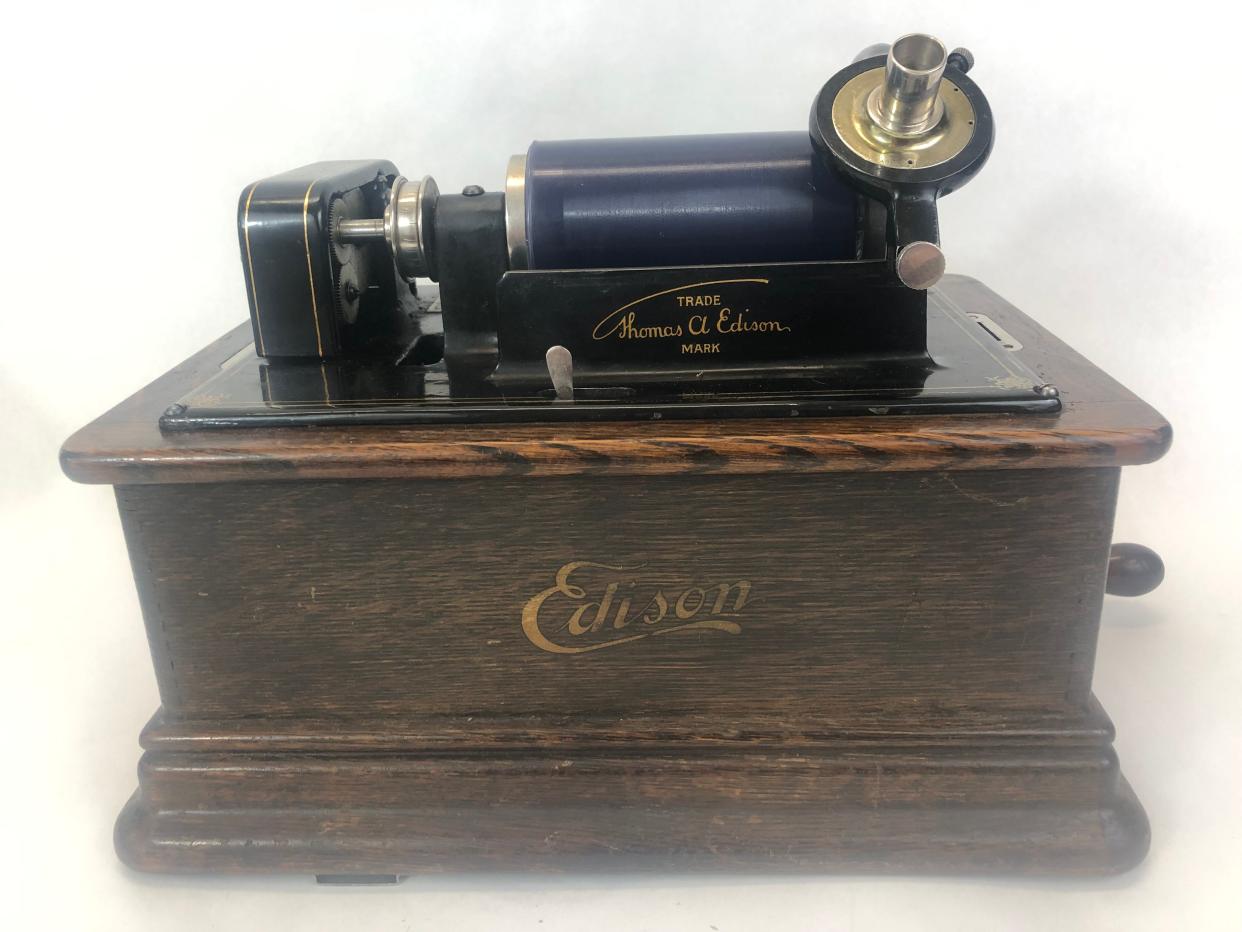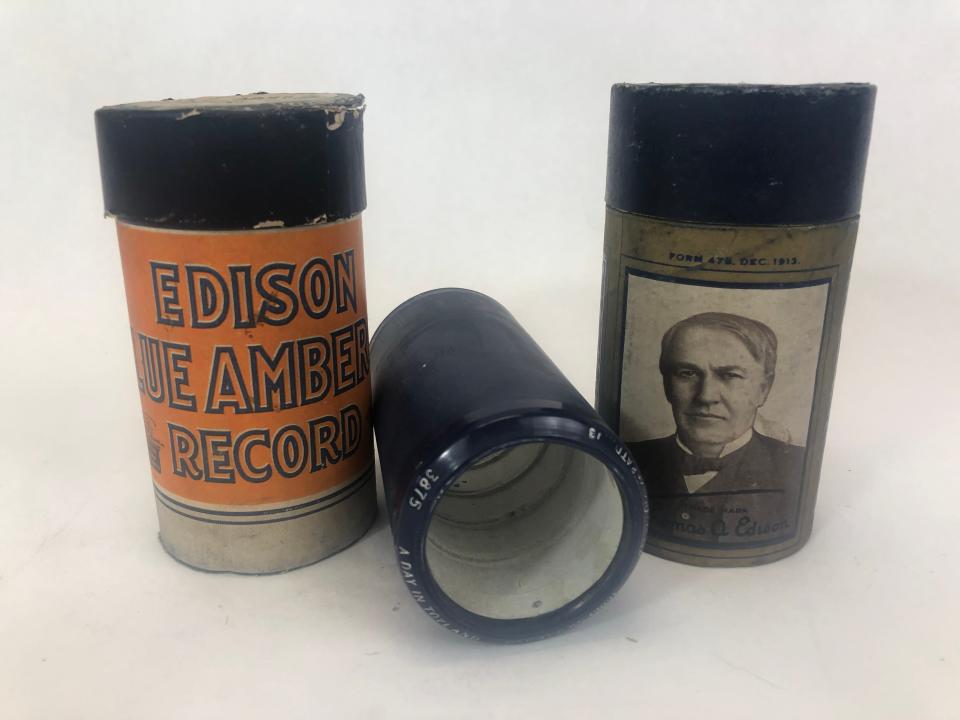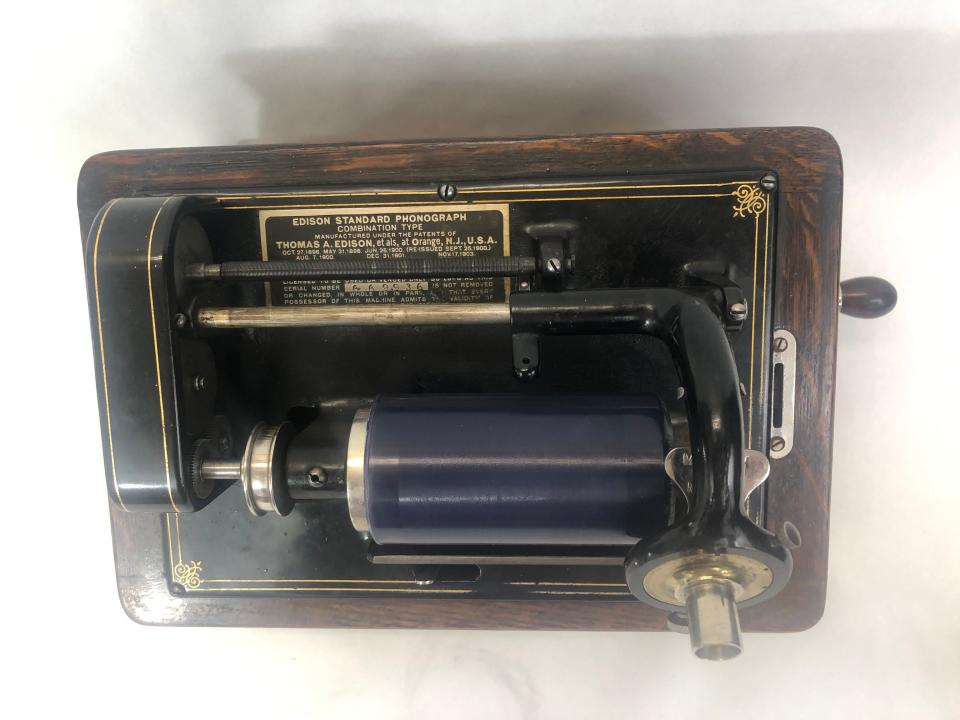Antiques: Thomas Edison, a musical pioneer

- Oops!Something went wrong.Please try again later.
The name Edison is well known to all of us here in the Coachella Valley. As the region's largest utility, we see their trucks, use their power, and pay their bills. However, it's easy to forget the man behind the name.
Thomas Edison (1847-1931) did more than almost anyone else to bring the world into the modern age. He held more than 1,000 patents in all kinds of fields and was especially prolific in the area of audio/visual technologies. His invention of the Edison Standard Phonograph brought music into the homes of countless Americans, and one of his early cylinder machines will occasionally turn up in galleries like ours. It's worth a listen.
Born in Ohio, Thomas Edison was the youngest of seven children and struggled through a childhood of ill health. Nearly deaf since the age of 12, he cut his teeth during the Civil War working in various telegraph offices throughout the north. By 1869, he was an entrepreneur, engaged in telegraphy as both a consultant and developer. Seven years later, he had earned the means to open his own laboratory in New Jersey and spent the rest of his life as an experimenter and inventor.
Edison began by improving Alexander Graham Bell's telephone, and while doing so, it somehow occurred to him that sound might be captured as grooves on a piece of paper. Lo and behold, the idea worked, but there was little initial interest and Edison moved on to the concept of electric lighting. We all know how that turned out.

After achieving great success with the incandescent bulb, Edison returned to the idea of a phonograph around 1887. During his absence in the field, others had made significant advances, including Bell and Tainter's development of what they called the graphophone. It was basically a device that could read the grooves in a wax cylinder and turn the variations into sound. Initially dubious, Edison eventually saw the wisdom of this approach and adopted it as his own.
During the 1890s, he gobbled up competitors and made significant improvements to the medium, highlighted by the introduction of the Blue Amberol cylinder in 1912 that proved much more durable than those made of wax. To be sure, this was a major advancement, but the market had already begun to move towards discs rather than cylinders. Within a few short years, the cylinder phonograph was obsolete.
Edison went on to achieve remarkable things in other fields, including such diverse categories as ore milling and motion pictures. During WWI, he was an active consultant to the navy, specializing in the area of submarine detection. As he aged, his health worsened and he became something of a beacon for up-and-coming entrepreneurs such as Henry Ford and George Eastman. Widely celebrated in his later years, Edison finally passed away in New Jersey in 1931, having left his mark on a wide range of enterprises.

Among all his inventions, the original Edison Standard Phonograph is one that still turns up from time to time, even in working order. Not surprisingly, his poor hearing may well have worked against him during his phonograph years. Edison was no music connoisseur, and often chose less popular tunes to put on his cylinders and later his proprietary discs. In offering better music, his competitors were able to gain a leg up and ultimately drove Edison out of the phonograph business.
If you can find the cylinders and the phonograph to play them on, you can still listen to sounds from the past and decide for yourself.
Mike Rivkin and his wife, Linda, are longtime residents of Rancho Mirage. For many years, he was an award-winning catalogue publisher and has authored seven books, along with countless articles. Now, he's the owner of Antique Galleries of Palm Springs. His antiques column appears Sundays in The Desert Sun. Want to send Mike a question about antiques? Drop him a line at info@silverfishpress.com
This article originally appeared on Palm Springs Desert Sun: Antiques: Thomas Edison, a musical pioneer

